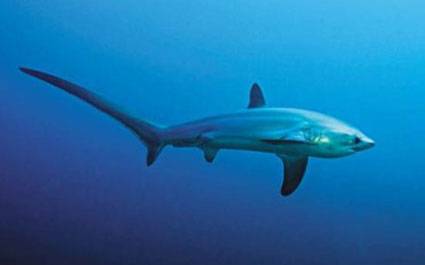Pelagic Thresher Shark – Long Tail to Smack Fish
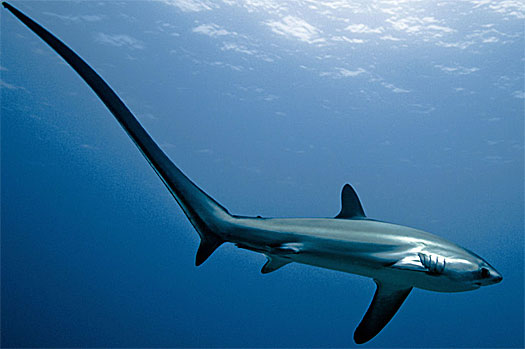
The pelagic thresher shark (Alopias pelagicus) is one of three or possibly four species of thresher sharks, which are distinguished by an extremely long tail, with a scythe-shaped upper lobe which is as long, or almost as long, as the whole body itself. The tail can be used almost like a weapon, to chop through schools of fish and squid, herding, smacking, stunning or killing the prey before feeding. They have long pectoral fins, a large first dorsal and small second dorsal, a small anal fin and short gill slits. Also, they have small blade-like teeth with cusplets (secondary smaller pointed edges or ridges of a tooth). They are slightly smaller than the other two species in the family: the common and bigeye threshers, and the have smaller eyes. They are a dark silvery blue in color. The maximum length is not so big at about 11 ft (3.3 m), and remember that includes its super long tail.
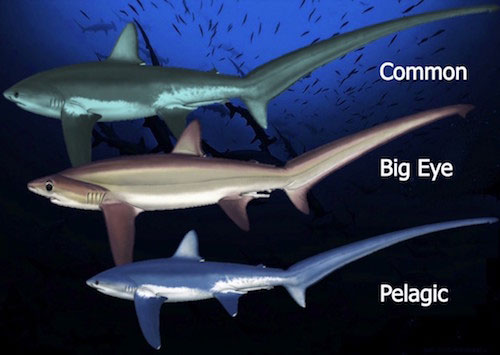
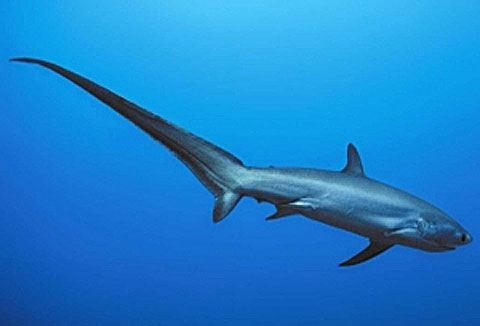
Pelagic threshers inhabit tropical oceanic waters from the west coast of the Americas to the Red Sea and the east coast of Africa. They are usually found in offshore waters near the surface layer, but on occasion they can be seen closer to land, and they can live from near the surface to depths of at least 500 ft (152 m) deep. Their main prey are any smallish fish that they can find at these depths where there is less competition from predatory fish that are in shallower waters like the tuna. They have been seen approaching coral drop-offs on oceanic islands to utilize the services of cleaner fishes.
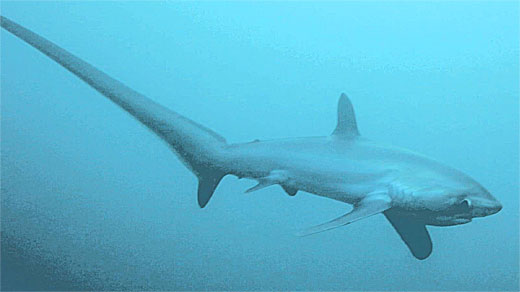
Pelagic threshers are believed to be partly or fully warm-bodied, as are their cousins the bigeye and common threshers. Females are able to bear pups after they reach a size of about 81 ft (2.6 m). Usually only two pups are born per litter, after eating the other eggs and possibly embryos as well. They are almost 3 ft (1 m) in length when born. They have been exploited by commercial and sport fishermen for meat, vitamin A and oil (from the liver), the skin for leather, and the fins for soup. They are considered harmless to humans because of their size and there is no known history of them attacking humans.
